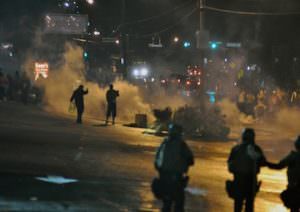America’s Love-Hate Relationship With Immigration
America has always had an immigration "problem," just as it has always been a beacon for the downtrodden who seek a better life here and, in doing so, make it a better country.WASHINGTON — The great immigration debate will continue after this Memorial Day — and Memorial Day next and the one after that. It is not to be settled with this or that piece of legislation which pleases the right or the left, or allows one political party or the other to claim credit or assign blame.
All this howling about border guards and amnesty, all the arguments over good immigrants versus the bad may seem like fresh fodder for the unceasing talkers of cable television or for candidates during the presidential debates. It is not.
America’s love-hate relationship with immigrants is nearly as old as the republic, and the contours haven’t changed much. If history is a guide, then this latest political spasm over immigration will turn out, eventually, like all the others: with more immigrants coming to the United States and assimilating enough to be seen eventually as just another thread in the social and cultural fabric that we know as America. This is, after all, how the bagel became ubiquitous and the taco gained fame through a fast-food chain.
“I have trouble seeing these people as anything other than potential Americans,” says Daniel Soyer, a Fordham University historian who specializes in immigration.
From the 18th-century Alien and Sedition Acts to the formation of ad-hoc militias that now try to enforce border regulations on their own, a fear of foreigners has coexisted in uneasy tension alongside a desire for cheap labor — and a yearning among those who would provide that labor to better themselves in a place where the heights to be reached exceed those anywhere else on Earth.
Almost always there have been efforts to keep out those considered racially and culturally suspect. It is an ugly subtheme of the current debate over Hispanic immigration and the post-9/11 suspicion of Muslims. In the 19th century, the Chinese became the first ethnic group to be singled out for exclusion from the United States with enactment of the Chinese Exclusion Act of 1882. People from all over Asia and the Pacific were barred in 1917. Now Asians are considered a “model minority,” prolific in the pool of overachieving Ivy League applicants.
The great wave of European immigration of the late 19th and early 20th centuries has been romanticized to the point of mythology. Descendants of these immigrants often claim their forebears came the “right” way — legally. In truth, there were few restrictions on who could come and no quotas until the 1920s. Then nativism and racial animosity again drove immigration policy with enactment of a quota system meant to keep out southern and eastern Europeans — Italians, Poles and Jews were the main targets. “They weren’t viewed as fit material for citizenship. The thinking was very racial,” Soyer told me. “The idea was that these people could not become good American citizens, because they just didn’t have it in their blood.”
The Depression brought immigration to an ebb because there were so few jobs to be had. But it, too, foreshadowed the current debate. In the 1930s, Mexicans, including legal residents and U.S. citizens, were removed from the Los Angeles area in a repatriation program driven by a sense that economically stressed Americans shouldn’t have to compete for jobs and dwindling resources. While southern and eastern Europeans had been kept out a decade earlier, Mexicans had been welcomed then for their cheap labor. “The railroads, mining companies and agribusinesses sent agents to greet immigrants at the border, where they extolled the rewards of their respective enterprises,” author Steve Boisson wrote last September in American History magazine.
As it was then, so it is now. Those who promote the roundup and deportation of 12 million illegal immigrants currently thought to be in the U.S. should consider the crude Depression-era lesson. The repatriation of Mexicans then didn’t stop California from becoming a haven for succeeding generations of immigrants from across the border. Nor, says Soyer, are current distinctions between legal and illegal immigrants of much long-term significance. “They come from the same places and they do the same jobs,” he notes.
It all reminds him of a recent conversation he had with a friend whose grandmother, illiterate at the time, emigrated in 1916 from Europe. A year later, Soyer notes, a literacy test was imposed and she would have been considered illegal. “What difference would it have made in her life?” he asks. “And what difference would it have made to America?”
Marie Cocco’s e-mail address is mariecocco(at symbol)washpost.com.
© 2007, Washington Post Writers Group
Your support matters…Independent journalism is under threat and overshadowed by heavily funded mainstream media.
You can help level the playing field. Become a member.
Your tax-deductible contribution keeps us digging beneath the headlines to give you thought-provoking, investigative reporting and analysis that unearths what's really happening- without compromise.
Give today to support our courageous, independent journalists.






You need to be a supporter to comment.
There are currently no responses to this article.
Be the first to respond.